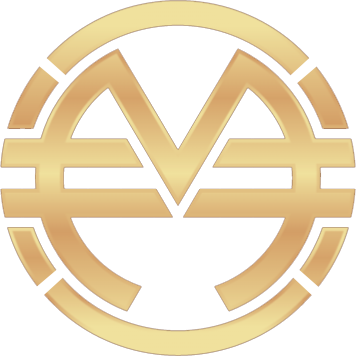
GLOSSARY
Crypto Art
a type of digital art that is represented as an NFT and stored on a blockchain.
NFT: Non-Fungible Token
a unique digital asset that represents ownership or proof of authenticity of a particular item or piece of content, stored on a blockchain.
Blockchain
a decentralized, digital ledger that records transactions across a network of computers in a secure, transparent and tamper-proof way.
Ether (ETH)
the native cryptocurrency of the Ethereum blockchain, used as a payment for transaction fees, computational services and for the creation of NFTs.
Gas
a unit of measurement for the computational effort required to execute a transaction on the Ethereum blockchain.
Hash
a unique string of characters, generated from the data of a digital asset, used to identify it on a blockchain.
Digital Wallet
a software program that stores private keys and public addresses, allowing users to send and receive cryptocurrency and access their NFTs.
Smart Contract
self-executing code on a blockchain, designed to automatically enforce the terms of an agreement between parties.
ERC-721
Ethereum Request for Comment (ERC) standard for NFTs, defining the necessary code for a smart contract to manage non-fungible tokens.
ERC-1155
Ethereum Request for Comment (ERC) standard for NFTs, allowing for the creation of both fungible and non-fungible tokens within the same contract.
Fungible Token
a type of token that is interchangeable, with equal value and interchangeable with other tokens of the same type.
MetaMask
a popular browser extension and mobile wallet for the Ethereum blockchain, used for accessing decentralized applications and managing NFTs.
DApp
Decentralized Application - a software application built on a blockchain, where the backend code runs on a decentralized network.
Collectible
a physical or digital item of limited quantity, highly valued by collectors for its rarity and uniqueness.
Yield Farming
the process of lending or staking cryptocurrency to earn a reward, often in the form of additional tokens.
DeFi
Decentralized Finance - a movement to use blockchain technology to disrupt traditional financial systems, with a focus on transparency, accessibility, and security.
Tokenization
the process of converting assets, such as real estate or art, into tokens, allowing for fractional ownership and trade on blockchain.
OpenSea
a decentralized marketplace for buying, selling, and discovering NFTs.
Rarible
a decentralized marketplace for buying, selling, and discovering NFTs.
Nifty Gateway
a platform for buying and selling limited edition NFTs from top artists, celebrities and brands.
UNI
a cryptocurrency token that powers the Uniswap decentralized exchange, allowing for the exchange of NFTs and other digital assets.
Liquidity Pool
a pool of assets, provided by users, used to facilitate trades on decentralized exchanges.
Whitepaper
a detailed report outlining the concept, purpose, and technical aspects of a blockchain project or NFT.
Public Key
a string of characters, generated by a digital wallet, used to receive cryptocurrency and access NFTs.
Private Key
a secret string of characters, generated by a digital wallet
Blockchain
A decentralized, distributed ledger that records transactions across multiple computers in a secure and transparent way.
Decentralized Autonomous Organization (DAO)
A decentralized organization run by code rather than people.
Cryptocurrency
A digital or virtual currency secured using cryptography and based on blockchain technology.
Smart Contract
Self-executing contracts with the terms of the agreement directly written into code.
Token
A unit of value or asset that is issued on a blockchain.
Non-Fungible Token (NFT)
A unique and indivisible digital asset that represents ownership of a specific item such as art, music, or collectibles.
Distributed Ledger Technology (DLT)
A system that allows multiple participants to have a shared and synchronized record of transactions and data.
P2P (Peer-to-Peer) Network
A network of computers where each participant can act as both a client and a server.
Interoperability
The ability for different blockchain systems to communicate and exchange information with each other.
Web3 Stack
A set of technologies that make up the infrastructure of the decentralized web.
Ether (ETH)
A cryptocurrency used to pay for transactions on the Ethereum network.
Gas
A fee paid in ETH to execute transactions and smart contracts on the Ethereum network.
DApp (Decentralized Application)
A decentralized software application built on a blockchain network.
Public Blockchain
A blockchain that is open for anyone to join and participate in.
Private Blockchain
A blockchain that is restricted to a specific group of participants and not open to the public.
Consensus Mechanism
A process used to achieve agreement among participants in a blockchain network on the current state of the ledger.
Hash
A unique, fixed-size digital signature created from a larger block of data.
Merkle Tree
A data structure used to verify the integrity of data stored in a blockchain.
Mining
The process of solving complex mathematical problems to validate transactions and add new blocks to a blockchain.
Proof of Work (PoW)
A consensus mechanism that requires participants to perform a specific amount of computational work to validate transactions and add blocks to a blockchain.
Proof of Stake (PoS)
A consensus mechanism that requires participants to hold a certain amount of cryptocurrency in order to validate transactions and add blocks to a blockchain.
Staking
The process of holding a certain amount of cryptocurrency in a wallet in order to participate in a proof of stake consensus mechanism.
Wallet
A software program or hardware device used to store, manage, and send cryptocurrencies.
Oracles
A third-party service that provides real-world data to smart contracts.
DeFi (Decentralized Finance)
A financial system built on blockchain technology that operates without intermediaries.
